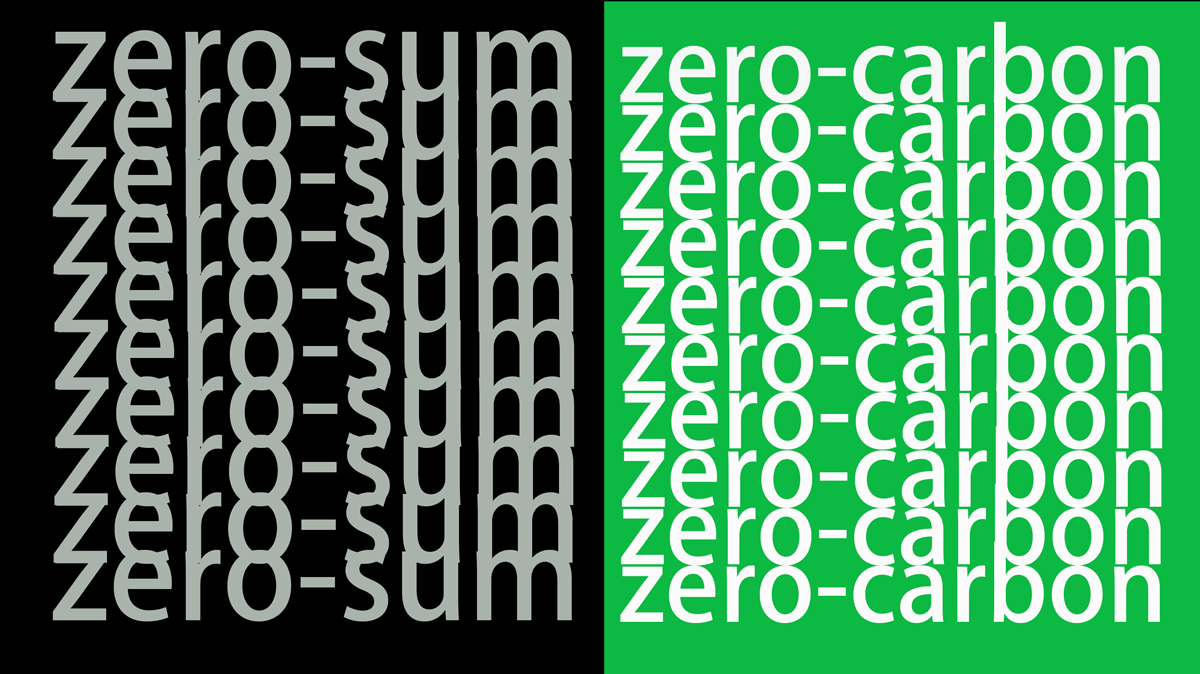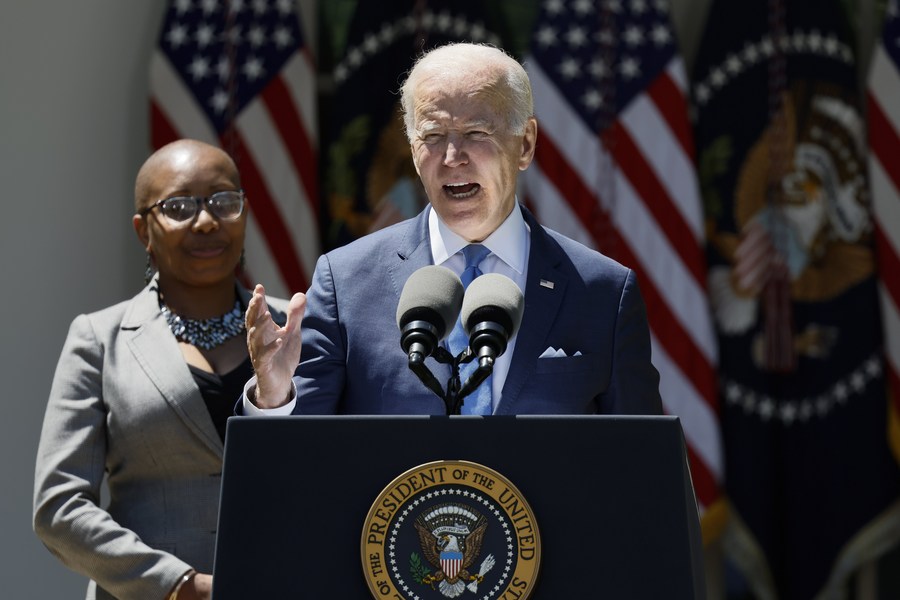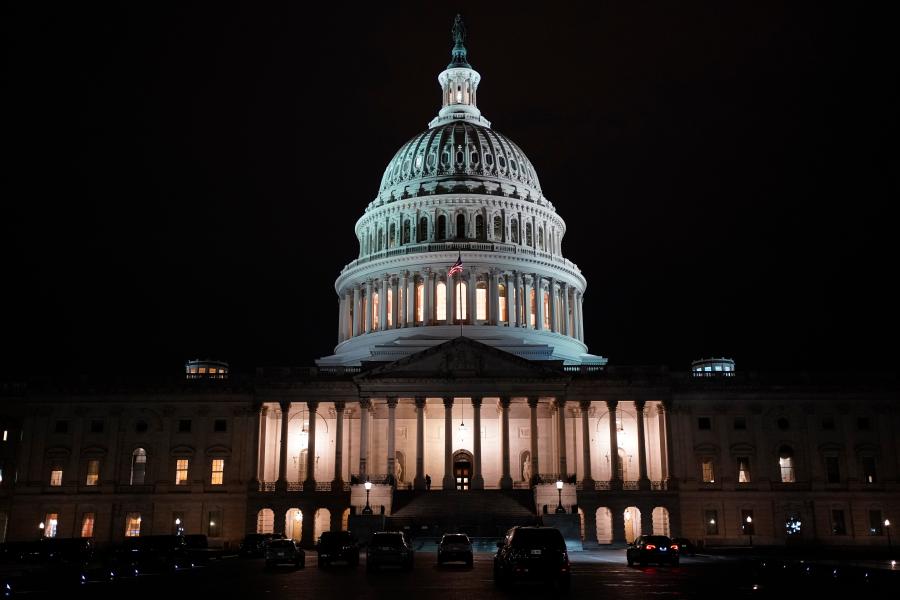How Washington's zero-sum fixation is derailing its own agenda

The US has pledged to rally to the cause of fighting climate change; but isn't its coercive tariff on solar panels only serving to stymie that mission? (Graphic: Zero-sum or zero-carbon/People's Daily Online)
The Glasgow climate summit held last year was largely viewed as a chance for redemption. After the grim outcome of the (2°C) mitigation target set at the 2009 Copenhagen summit, humanity's "last chance" to save the planet, nations were nudged to give climate cooperation another shot. Few world leaders are more zealous and vocal on the matter than US president Joe Biden, who has proposed a portfolio of ambitious goals and called for joint collaboration between major players and, in particular, the US and China.
Then, last February, in a surprise move, the Biden administration announced that it would extend the Trump-era Section 201 tariffs slapped on solar panels, in a bid to "continue facilitating positive adjustment to competition" from imported photovoltaic cells. Though the administration did offer some clues on the "positive adjustment," almost four years after the tariffs were levied, experts argued that America's solar industry remained nascent in its development despite full-blown trade barriers and that the decision came at an emissions cost.
In an opinion essay published earlier this month in The Hill, John Paul Helveston, an American researcher, debated that tariffs won't help the US build a "robust solar industry." He contended that China's tremendous R&D efforts on photovoltaic (PV) innovations, which helped slash the prices of most PV panels from $2,000 per kilowatt to just $300 per kilowatt, cannot be simply duplicated. It is highly unlikely that another nation will be able to "replicate China's skills in the time frame needed to avoid the worst consequences of climate change," he cited an article he co-wrote in Science back in 2019, adding, "Rather than continuing the Trump-era tariffs on Chinese solar panels, the US and others should be partnering with Chinese firms to obtain low-cost technologies and components to increase domestic deployment of renewables as fast as possible to meet the narrow window left to decarbonize."
Low-cost solar technologies and components, however, have been the very items subject to Washington's ongoing investigation.
The New York Times reported on April 29 that, amidst an investigation by the US Commerce Department targeting Chinese-made PV parts, the US solar industry has been "frozen," with over 300 solar projects being "canceled or delayed." American energy enterprises, big and small, have all been dragged into the quagmire of self-censorship over Chinese solar parts. "The investigation is having a catastrophic negative impact on the renewable energy sector and driving up electricity prices. With each day the tariff investigation continues, the country is falling further behind in achieving our climate goals," said Nick Bullinger, COO of a Chicago-based solar company, in an interview that appeared in the Times article.

U.S. President Joe Biden (R) speaks during an event, at the White House in Washington, D.C., the United States, on May 9, 2022. Biden said that the administration is "discussing" whether to drop hiked tariffs on Chinese products. (Photo by Ting Shen/Xinhua)
From the perspective of environmental benefits or from the standpoint of economic interests, Washington's 4-year-long-and-counting solar clampdown is cost-ineffective, as it collides with even Biden's own climate agenda.
US president Joe Biden attended the Glasgow summit with high hopes—100% renewable energy by 2035; but the Solar Energy Industries Association (SEIA), an NGO, estimated that America's current production capacity only makes up 15% of its demand. Neither will taxing and purging Chinese solar panels or PV parts help "bring jobs back home," since even with heavy tariffs the US remains heavily dependent on imported PV products.
Besides, the volume of jobs generated by solar installations in the US is ten times larger than the manufacturing jobs created by the nation's entire solar sector, according to the US National Renewable Energy Laboratory (NREL). As a letter sent to President Biden last January by eight American senators (from both parties) stated, the Section 201 tariffs had "led to the loss of more than 62,000 American clean energy jobs and 10.5 gigawatts of foregone solar deployment." It is difficult then to tell who the tariffs and investigation are designed to punish: overseas solar producers or the American labor force?

Photo taken on Nov. 19, 2021 shows the U.S. Capitol building in Washington, D.C., the United States. (Photo by Ting Shen/Xinhua)
But it's not hard to detect what formula is being applied in America's zero-carbon solution—its default zero-sum fixation. After all, the one-nation's-gain-representing-another's-loss mindset takes various shapes in the China-US relations from Washington's point of view.
On the global stage, it is reflected in Washington's unreasonable belief that China's global presence, such as donating COVID-19 vaccines to developing nations, will undermine the superpower's global influence.
In the economic sphere, it is manifested in America's obsession with punitive tariffs, which it deems will help reverse trade deficits and boost domestic industry, even though the burden will ultimately be shifted towards American consumers in the form of rising prices.
In the technological and academic realms, it is showcased in America's year-long crackdown on Chinese tech companies and its unjustified witch-hunt targeting Chinese academics and students.
... ...
The aforementioned aspects of Washington's zero-sum practices are epitomized by its now-stagnant solar industry, which in turn has demonstrated why such a mindset won't work. Internationally, it will risk hindering the joint cause of emissions reduction; economically, it will impede the low-hanging fruits and long-term benefits brought by the should-be full-fledged solar sector; and, from the perspectives of innovation and technological progress, it will further dampen the outlook of cooperation on green innovations.

Aerial panoramic photo taken on April 21, 2022 shows the Dalad Photovoltaic Power Base in Dalad Banner, north China's Inner Mongolia Autonomous Region. (Xinhua/Liu Lei)
Dwelling on a planet that is currently plagued by a global pandemic (accompanied by inflation and a possible recession), haunted by continuous wars and conflicts, and overshadowed by the looming threat of global warming, we all know that a zero-sum fixation and a Cold-War mindset won't help fix any of these global problems. On the contrary, they are destined to make the planet warmer, wars deadlier, and other global puzzles more insoluble.
For Washington, it needs to face the reality that it cannot achieve technological hegemony or climate leadership by setting up a new Iron Curtain to deter and isolate China. Returning to a rational and pragmatic China policy is the sole way to nurture healthy and sustainable China-US ties and encourage the two sides to work together on issues of common and global concern. Conversely, the zero-sum mindset is bound for a lose-lose path.
Photos
Related Stories
- U.S. should return to rational, pragmatic policy toward China
- China-U.S. economic, trade relations win-win in nature: Chinese ambassador to U.S.
- China expresses strong opposition to U.S. lawmakers' visit to Taiwan
- China is not interested in challenging or replacing others: FM spokesperson
- China firmly opposes U.S. congressmen's visit to Taiwan: spokesperson
Copyright © 2022 People's Daily Online. All Rights Reserved.










